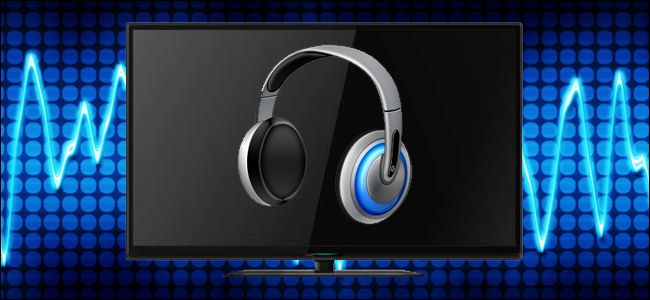
Adding wireless headphones to your TV is a great way to watch without disturbing everyone else in the house. Here’s how to outfit your TV with wireless Bluetooth headphones.
Why Would I Want to Do This?
You’ll need to hook up a Bluetooth transmitter to your HDTV, since most don’t have it built in.
The transmitter you select depends on what audio outputs your HTDV supports and whether you need to hook up one or two headphones. When the transmitter is in place, you can pair any set of Bluetooth headphones with it. Expect to spend $20-50, plus the cost of the headphones themselves.There are really two questions to address here: “Why add headphones to your HDTV at all” and “Why choose Bluetooth over something like an RF headset?”There’s a variety of reasons you might want to add headphones to your TV watching experience. If one person is hearing impaired—or if you and your viewing partner can’t agree on how loud the TV should be—adding headphones lets you both listen at different volumes. If you’re trying to watch a movie or play video games without waking up your spouse or kids, wireless headphones are great for that too.
So, why Bluetooth instead of another solution like an RF headset? The truth is, there are advantages and disadvantages to each technology. A good RF wireless headset—like the Sennhesier RS120 ($60)—provides better sound quality and listening range than many Bluetooth headsets. However, RF headsets require connecting a large transmission base to your television that also doubles as charging station.
In addition to the bulk, you can’t use the headphones with other devices unless you plug the whole transmitter into that device (so you can’t take your nice Sennhesier headphones on an airplane with you). Further, additional headsets are pricey (the well loved Sennhesier RS120 we linked to costs $60 for the base and the headphones…and another set of headphones will cost you as much as the original package).Bluetooth headsets offer more flexibility because you can pair them with any device that supports Bluetooth, making it much easier to use them wherever you want—you can splurge more on a nice pair because that pair isn’t locked to just your TV but can also pair with your, say, iPhone for use outside the house). Also, because Bluetooth headphones are ubiquitous at this point, it’s much easier to find exactly the kind of headphones you want without having to settle for limited RF models out there (or dealing with the headache of figuring out whether different brands use the same frequency) and if you want to buy more than one pair it’s far more economical to do so.
There is one potential pitfall with Bluetooth headphones that’s worth mentioning. Some models—especially older ones—suffer a tiny bit of lag between the time the sound comes out of the source and the time it hits your ears. When you’re listening to music—or even playing video games—this lag is not so noticeable. But when you’re watching video, even the tiniest bit of lag can make people’s voices feel out of sync with their lip movements. It can be pretty distracting. It’s worth worth paying a little premium for Bluetooth equipment that employs newer low-latency standards to avoid this pitfall—more on this in a moment.
What You Need
It’s easy to add Bluetooth headphones to your smartphone, since Bluetooth has been a standard feature on new phones for some time now. Adding Bluetooth headphones to your TV gets a bit trickier. Despite the fact that modern HDTV sets should come with Bluetooth support built in by now, most don’t. You’ll likely have to retrofit your TV with Bluetooth support.
The first stop in retrofitting your TV is to determine how sound exits your TV—or media center—so that you can purchase the correct adapters (if necessary) and ensure you’re connecting your Bluetooth audio solution appropriately.
Identifying Your Setup
If you have just a TV and no other sound equipment attached—like a receiver—you should check the available ports on your TV. If you have a receiver or sound bar that all your audio sources feed into, you’ll want to check the ports on that instead of the TV. This way your new wireless headphone setup will work for not just watching TV, but for listening to music and whatever other audio you pipe through your home media center.
The image above highlights the relevant audio ports for our purpose. This particular TV includes the three primary audio port formats, highlighted by the red rectangle—a composite Left/Right audio output (labeled “L” and “R” in the photo), a standard 3.5 mm port (labeled “AUDIO”), and an optical TOSLINK output (labeled “OPTICAL”).
Your TV might be different, but the vast majority of HDTVs—and receivers—have at least a TOSLINK optical port and either a 3.5mm or L/R composite ports. The headphone jack and L/R composite jacks output the audio in analog format and require no conversion, but depending on the model Bluetooth adapter you purchase you may need to buy a cheap L/R to headphone adapter like this one ($3).
If, for some reason,…
The post How to Add Bluetooth Headphones to Your HDTV appeared first on FeedBox.